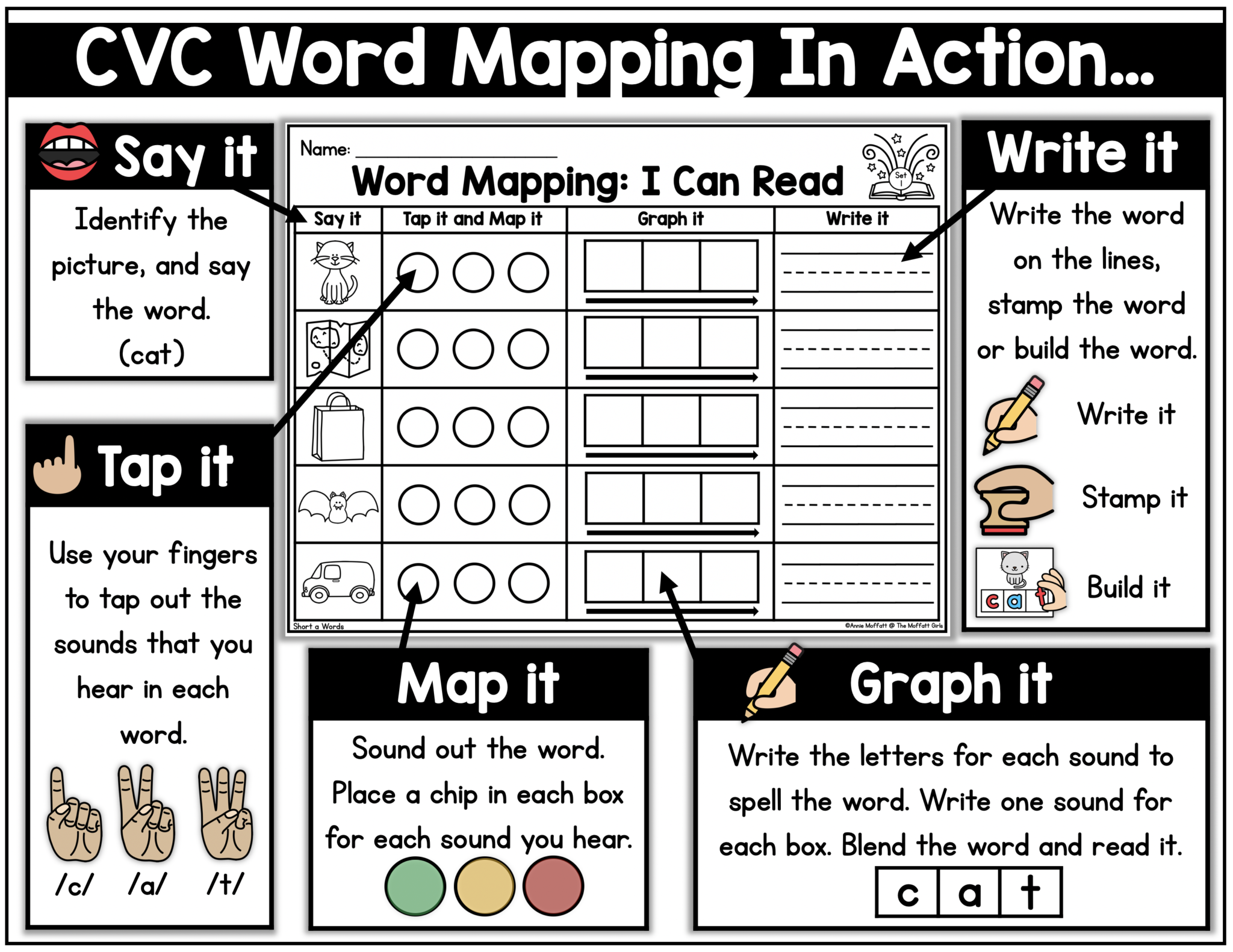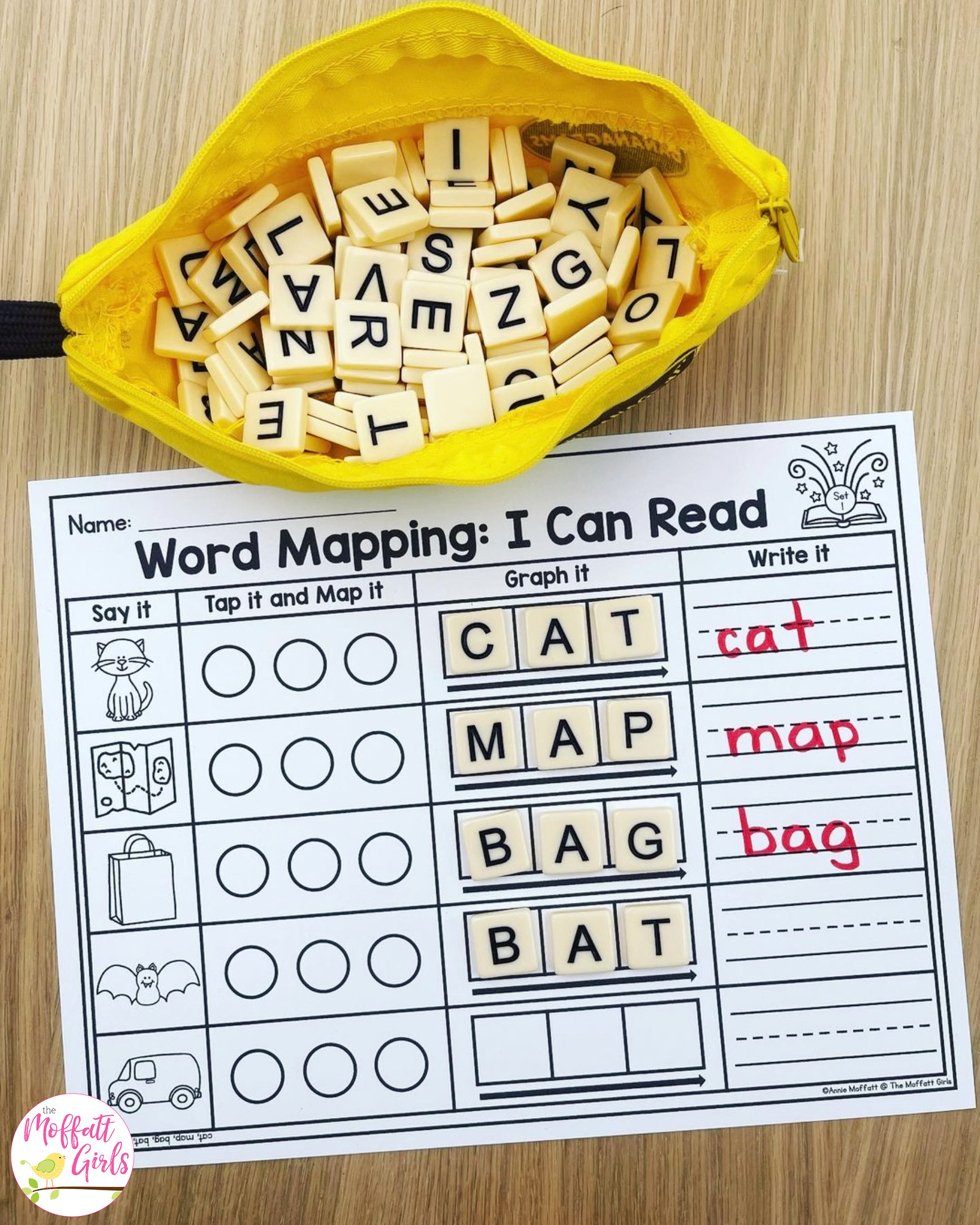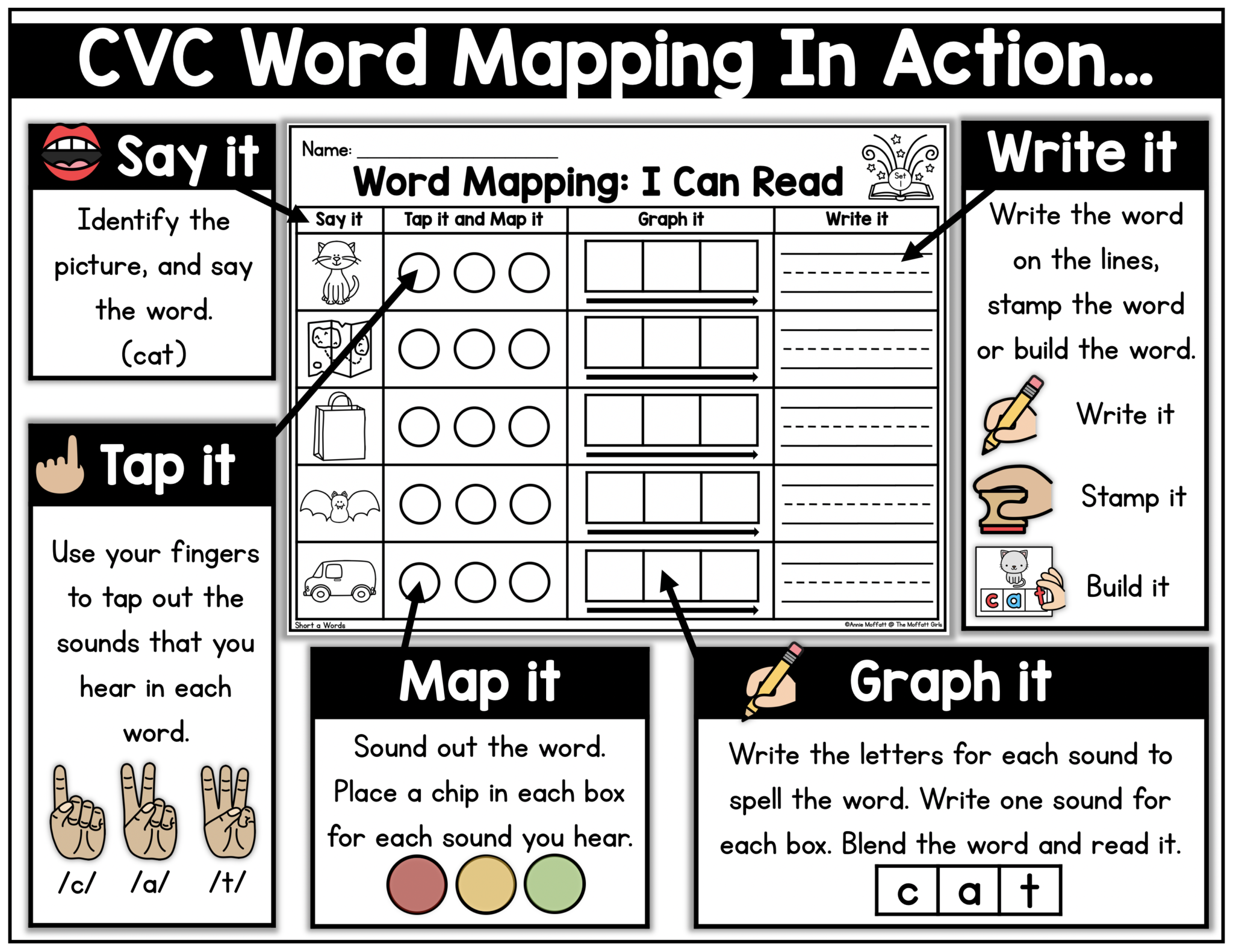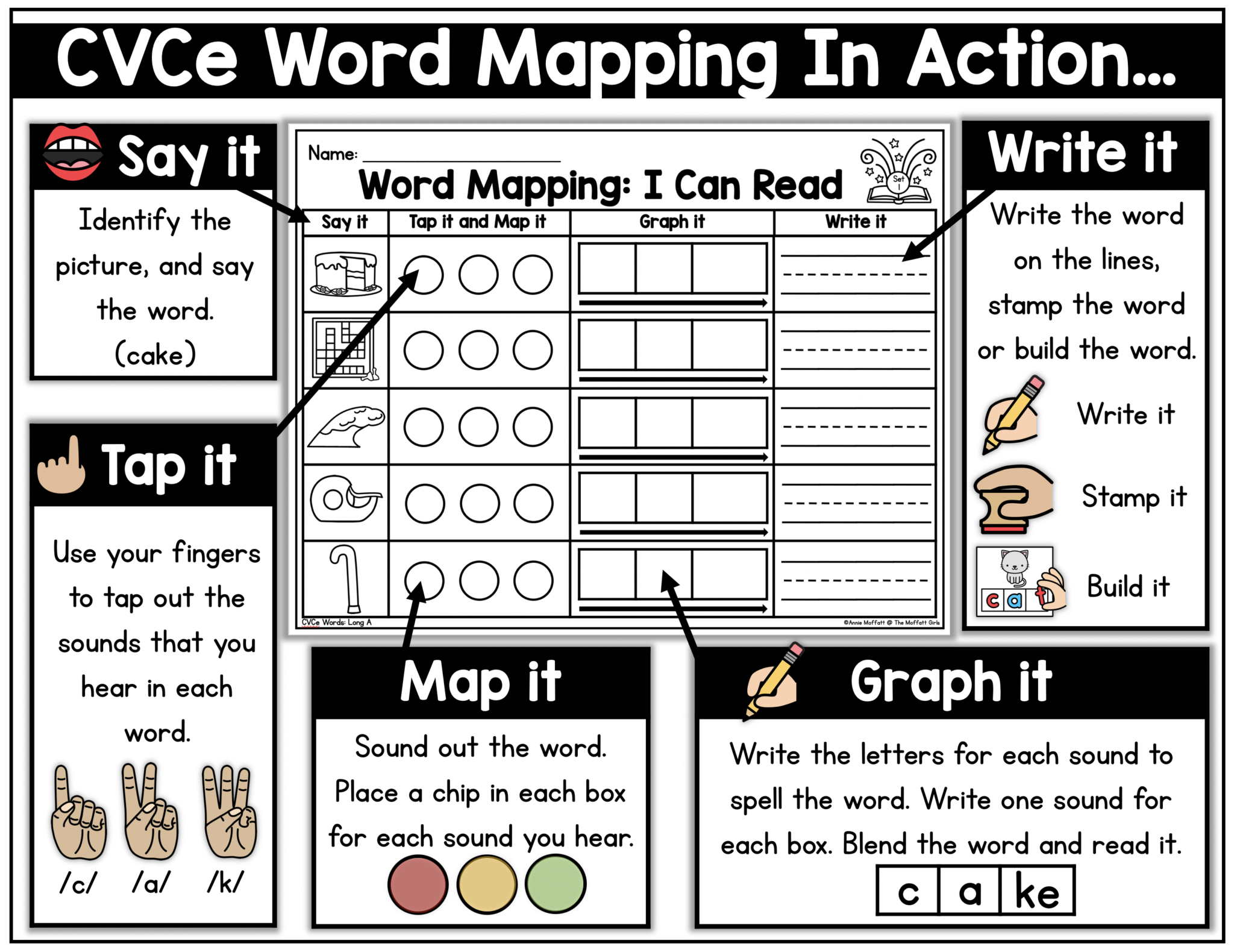Are you looking for an effective way to systematically teach your students how to read? If so, you’ll want to take a look at the Word Mapping Bundle! This resource is Science of Reading aligned, and explicitly teaches the foundational skills of phonemes and graphemes.
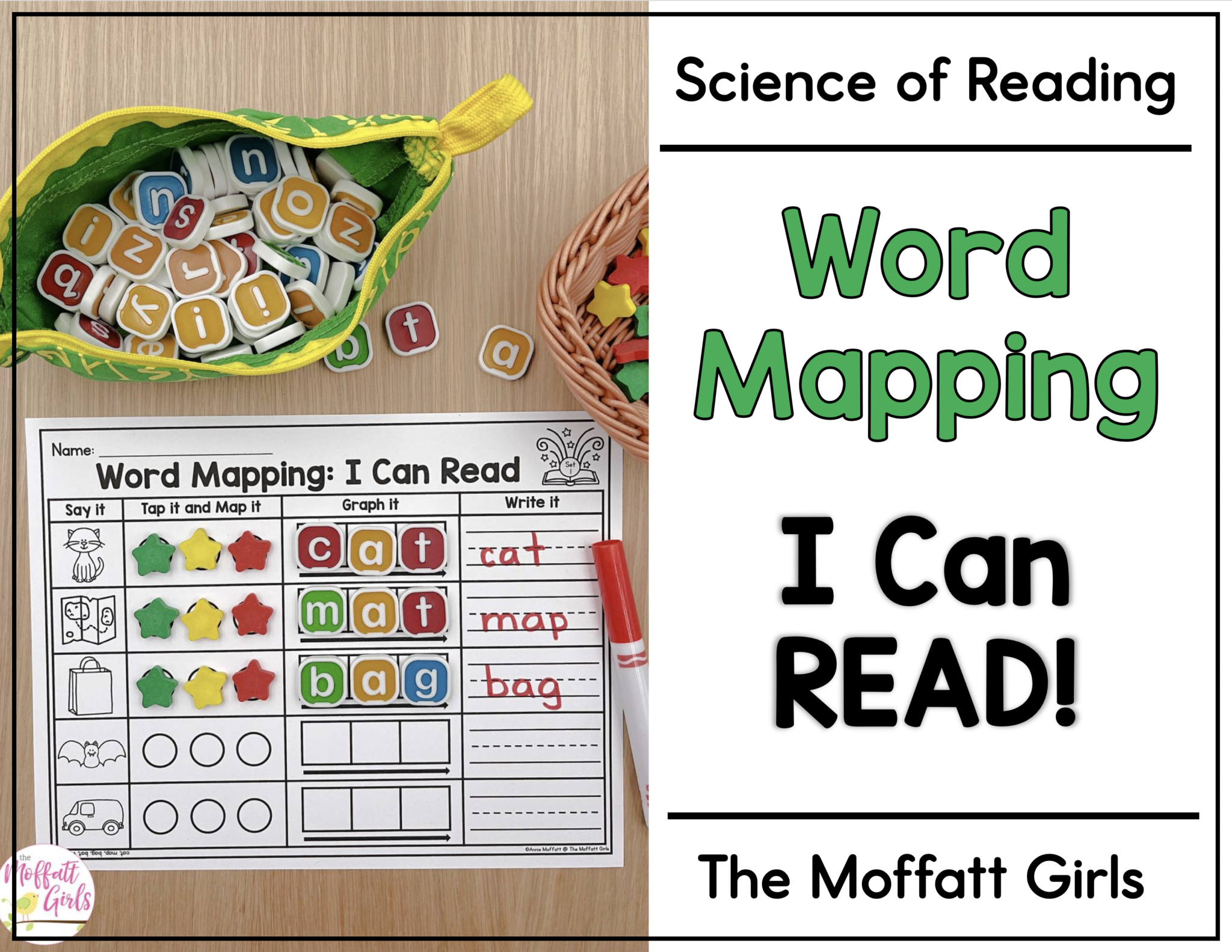
The Science of Reading teaches us that Phoneme-Grapheme Word Mapping is an effective way to help students learn how to read. You may be wondering what that all means, so I’m going to break it down for you.
Phonemes, Graphemes, and Morphemes…What’s the Difference?
Let’s start with phonemes, the individual sounds that make up words. A phoneme is the smallest unit of sound in a word. Most language experts have accepted that there are 44 phonemes in the English language. Phonemic Awareness is the ability to hear, isolate and manipulate those sounds, and it provides a strong foundation for early reading success. In fact, students who do not have a strong phonemic awareness often struggle with reading and spelling, even if they are successful in learning letter sounds and identification.
Next, graphemes are the individual letters or groups of letters that represent the individual speech sounds. This can be a single letter or a sequence of letters, such as ee, ai, th, igh, tch etc. So when a child says the sound /ch/ this is a phoneme, but when they write the letters ‘ch’ this is a grapheme.
Lastly, a morpheme is the smallest unit of meaning in a word. Morphemes can include base words, affixes and inflectional endings. A morpheme may be as short as one letter such as the letter, ‘s’. This letter adds plurality to a word such as cats. Another example of a morpheme is the letters ‘ing’. These letters add meaning to a verb showing the present tense.
Simply put, we use phonemes, graphemes and morphemes as the building blocks for spoken and written language.
How Does Word Mapping Work?
Word mapping is the process of saying a word, breaking down the words into phonemes, writing the letter combinations that make each sound, and writing the word together in its entirety. This process helps students understand and practice the phonemic and graphing skills that are involved in each word.
In this activity shown above, students begin by
- Identify the word: Students would say the name of the picture in the box to bring meaning to the word. For example, students will touch the picture of the cat and say cat. This ensures that students have understanding of the meaning of a word before decoding the word.
- Tap the word: Students use their fingers to tap the sounds they hear in the word. For example, cat has 3 sounds: /c/, /ă/, /t/. Again, for this portion we are only focusing on the sound and not letters. This is a great way to work on a little phonemic awareness. For the page above, student will be working with 3 sounds with their CVC words.
- Map the word: To map the word, students will sound out the word and place a chip or other manipulative in each box for each sound they hear. However, some words have more letters in the word than sounds. For example, the word cake has 3 sounds, /c/, /ā/, /k/. We know that the word cake has 4 letters, but only 3 sounds. Using the CVCe sets helps students recognize the roll of the silent e at the end of the word. The e at the end of a CVCe word makes the vowel say its name. Similarly, the word rain has 3 sounds, but 4 letters. You would tap and map the word like this /r/, /ā/, /n/. This is where students begin to implement the long vowel sounds after explicit phonics instruction.
- Graph the word: Students write the letters in the boxes for each sound to spell the word. In the example above, students will write the letters c a t, one letter in each box. If they saw a picture of the word rain, they would also use 3 boxes. Box 1: r Box 2: ai Box 3: n. For the word rain, the letters ai are the grapheme for the long a sound that you hear in the word. The long a makes one sound, but it is spelled with the letters ai.
- Write the Word: You can have students write the word, stamp the word, or add letter tiles. Do whatever works best for your students!
In the examples below, I used Bananagrams and My First Bananagrams to add more fun!
Which Phonics Skills are included in the Word Mapping Bundle?
The Word Mapping Bundle includes the following phonics skills:
1. CVC Words (consonant, vowel, consonant): short vowel CVC words a, e, i, o, u and mixed review
CVC words offer a great starting point for beginning readers. These words follow the pattern of having a consonant beginning sound, short vowel medial sound, and consonant final sound. As students follow the process outlined, they will break the word down into the 3 sounds and include 3 one-letter graphemes to spell out the word and then write the word.
2. CVCe Words (silent e): long vowel CVCe words, a, i, o, u and mixed review
CVCe word are words that end in a silent e that makes the vowel sound of the word long instead of short. These words have a consonant beginning sound, a long vowel medial sound, and a consonant final sound. Students practice including the silent e in the final grapheme. Then they can write the word together.
3. Blend words: L-blends, S-blends, R-blends, also included: nk, ng, nd, and ft
Blend words are words that have two consonants that blend together as they are spoken, either at the beginning or at the end of the word. Since each letter sound is heard, students will separate each of the sounds when isolating phonemes and graphemes. These words typically have short vowel sounds, as in the word stem, but occasionally contain a long vowel sound, as in the word fold.
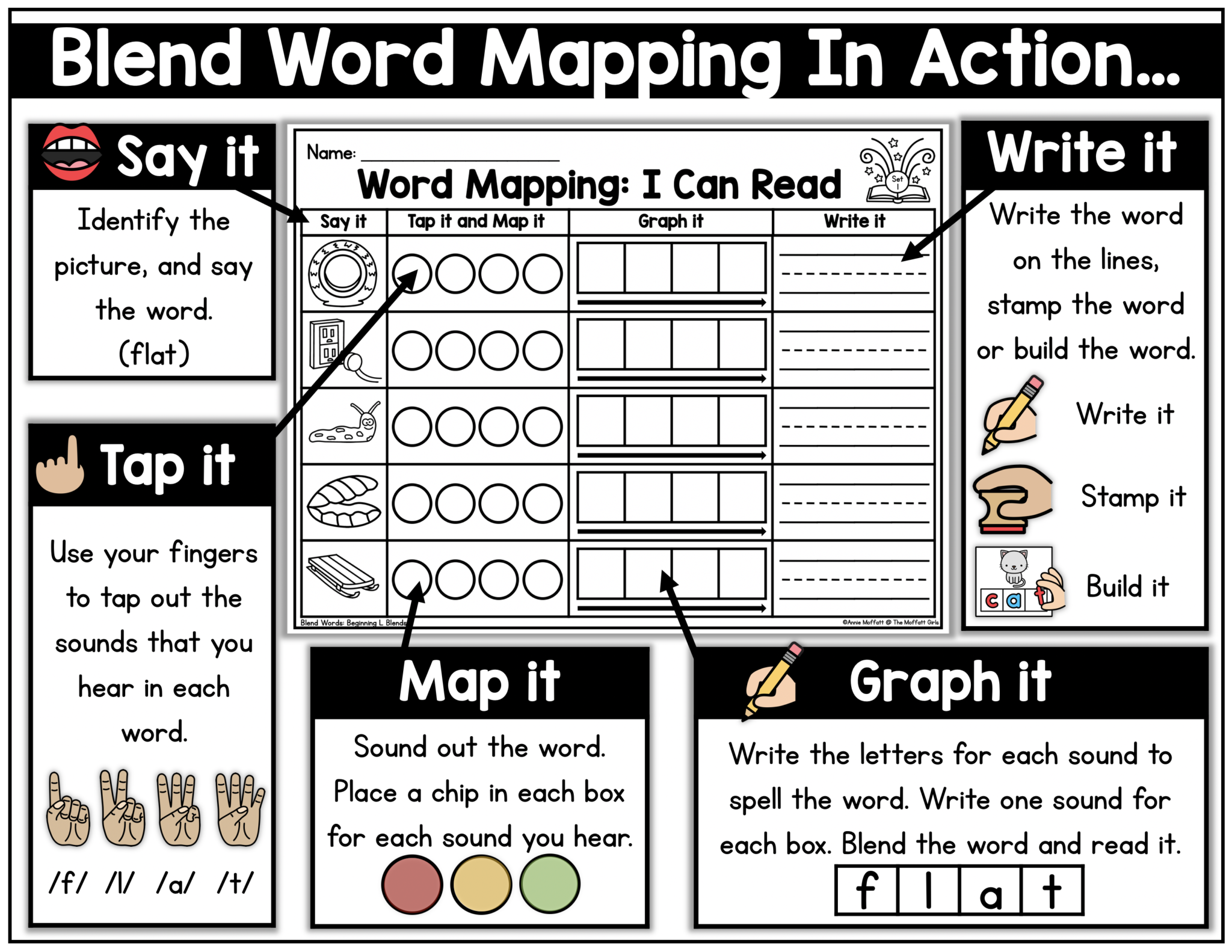
4. Digraphs: short vowel words: sh, th, ck, and ch, *blends also included with digraphs
A digraph is a combination of two letters that make one sound. Therefore, a digraph word will have less phonemes than letters. In this packet, the digraphs appear at the beginning, ending, or both the beginning and ending of a word, and the words may also include blends.
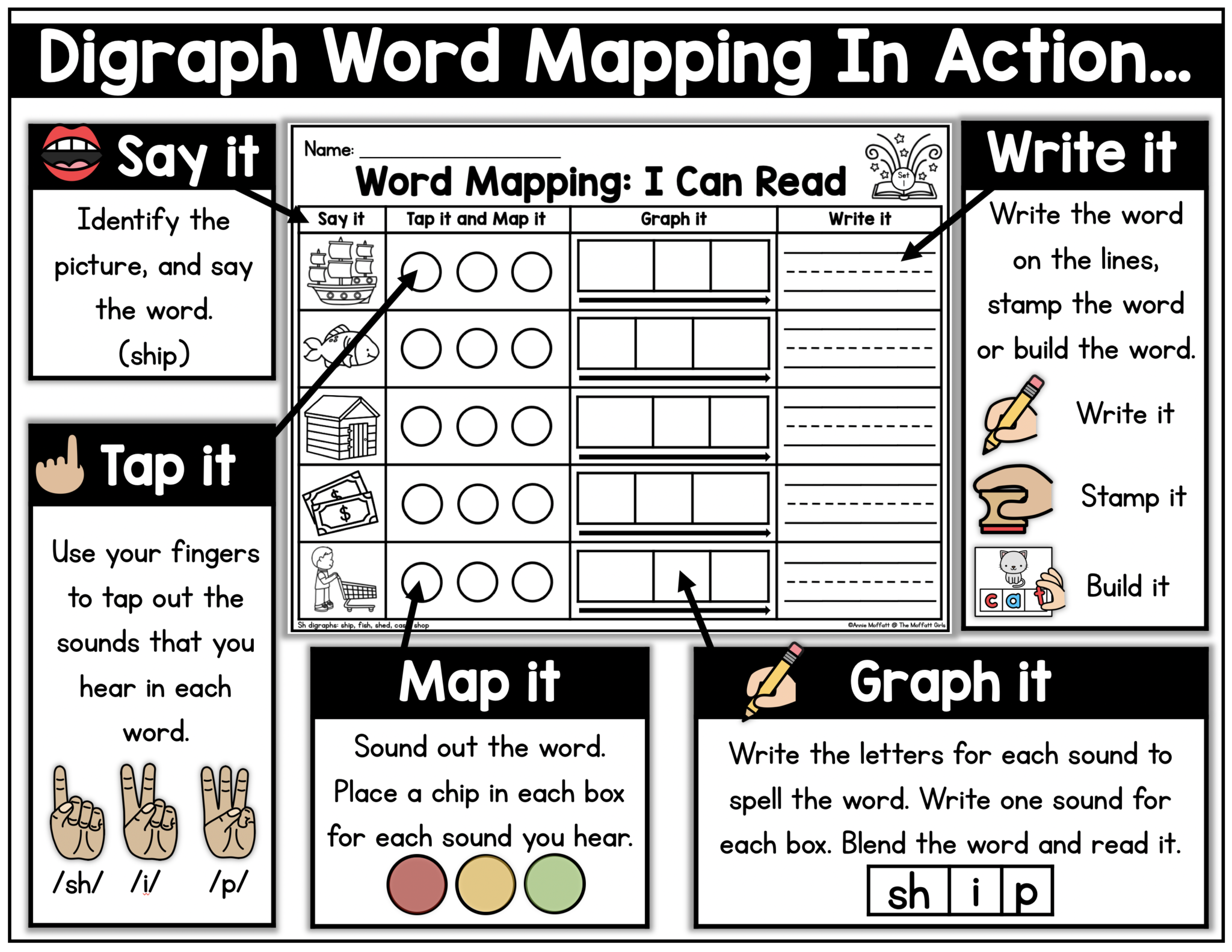
5. R-controlled vowels: ar, er, ir, or, ur *double consonants included, digraphs and blends
An ‘R Controlled’ vowel is a vowel that is immediately followed by the letter ‘r’. The vowel then can no longer be pronounced as a long or short vowel. The ar and or graphemes both have unique phonemes. However, the er, ir and ur graphemes all have the same phoneme. Therefore, practice is essential for students to master the graphemes for these words. The er, ir and ur words have been grouped individually for practice so that students can practice identifying the grapheme for each group before moving on to mixed review.
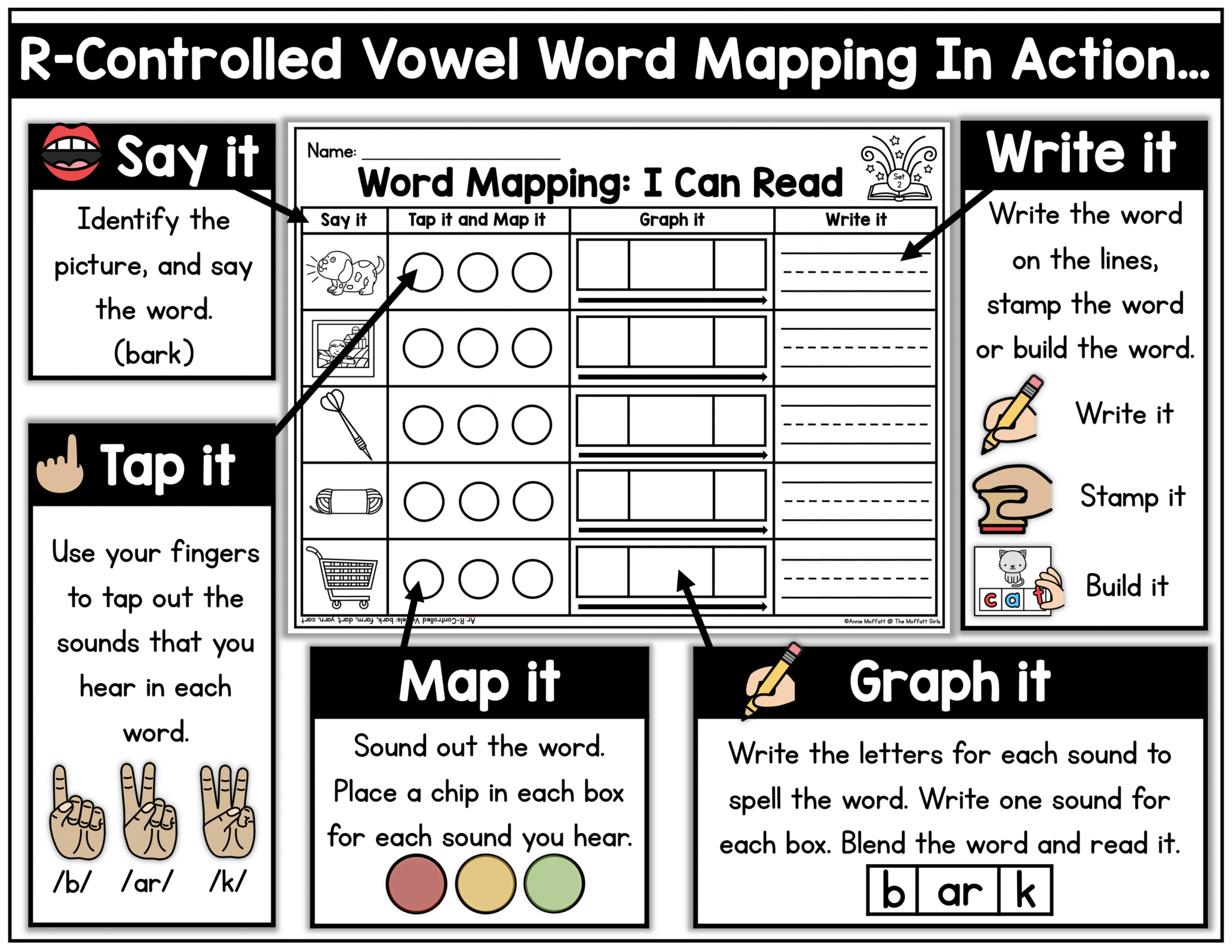
6. Vowel Teams: ai, ay, ee, ea, y, ie, igh, ew, ow
Vowel teams are two or more consecutive letters that combine to make a long vowel sound. These words may also include a digraph or blend.
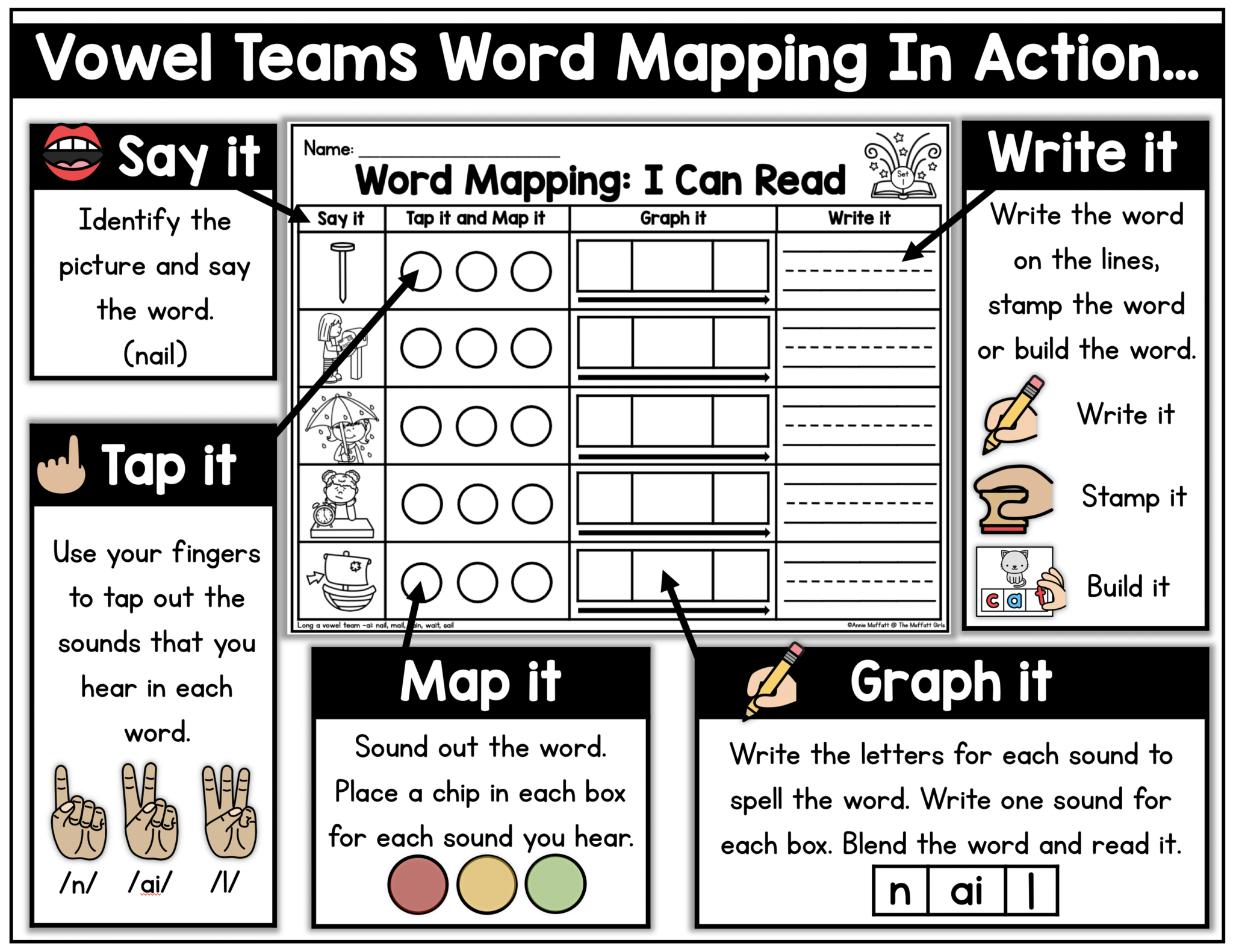
I hope this post is helpful! If you are looking for more Science of Reading aligned resources, check out the Heart Word Superstars: Click Here.
To see more Phonemic Awareness activities in action and to learn more about it, click here.
To see more phonics activities in action, click here.
The post Word Mapping! What it is and Why you NEED to Teach it! appeared first on Moffatt Girls.

